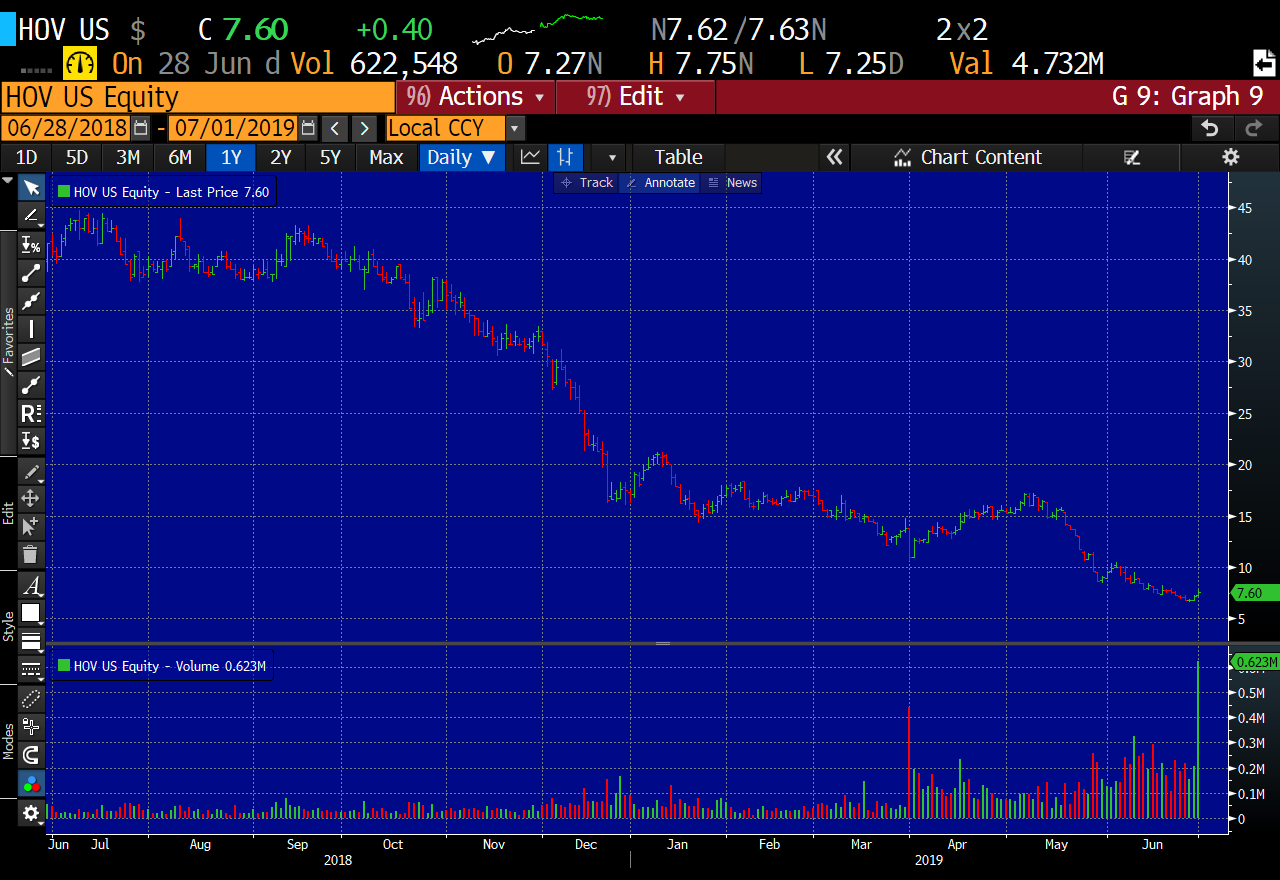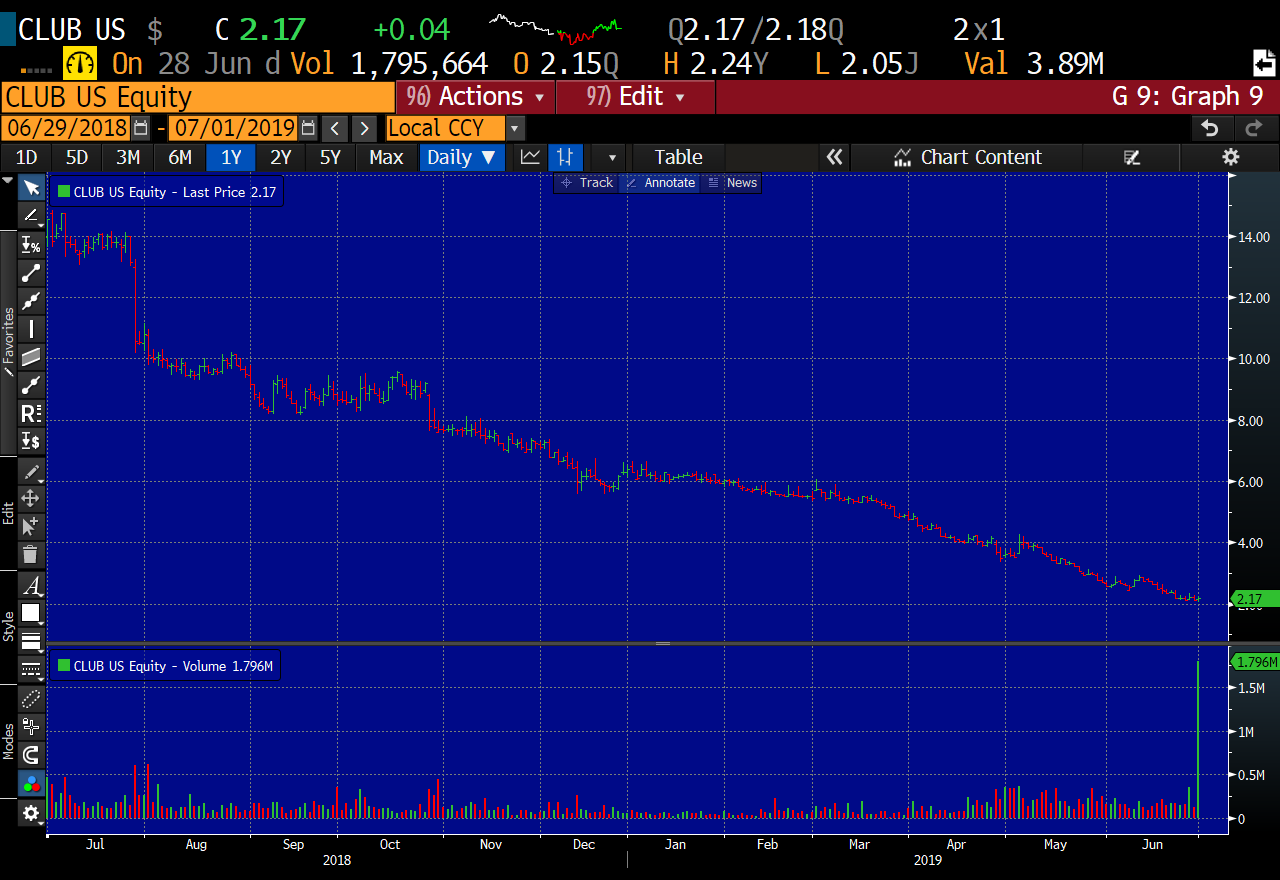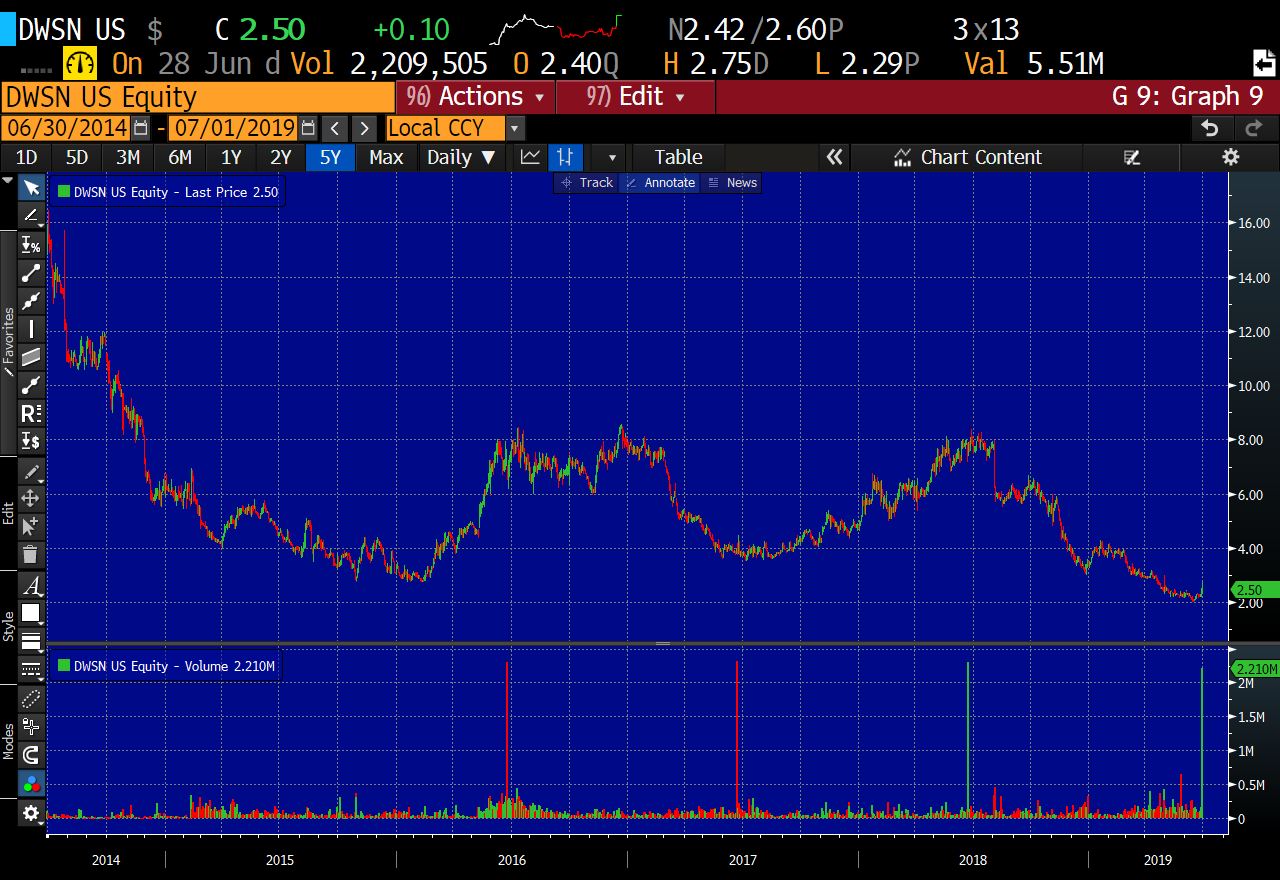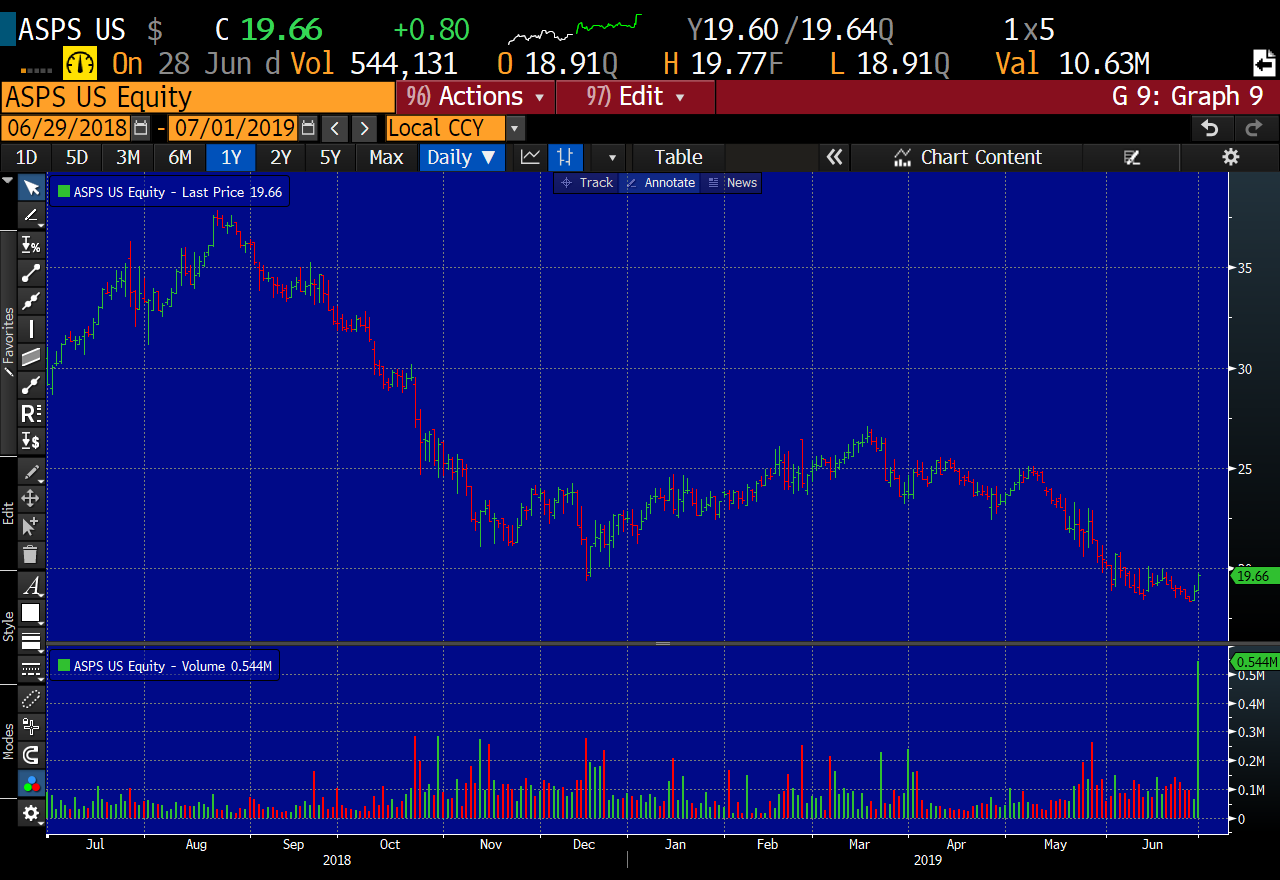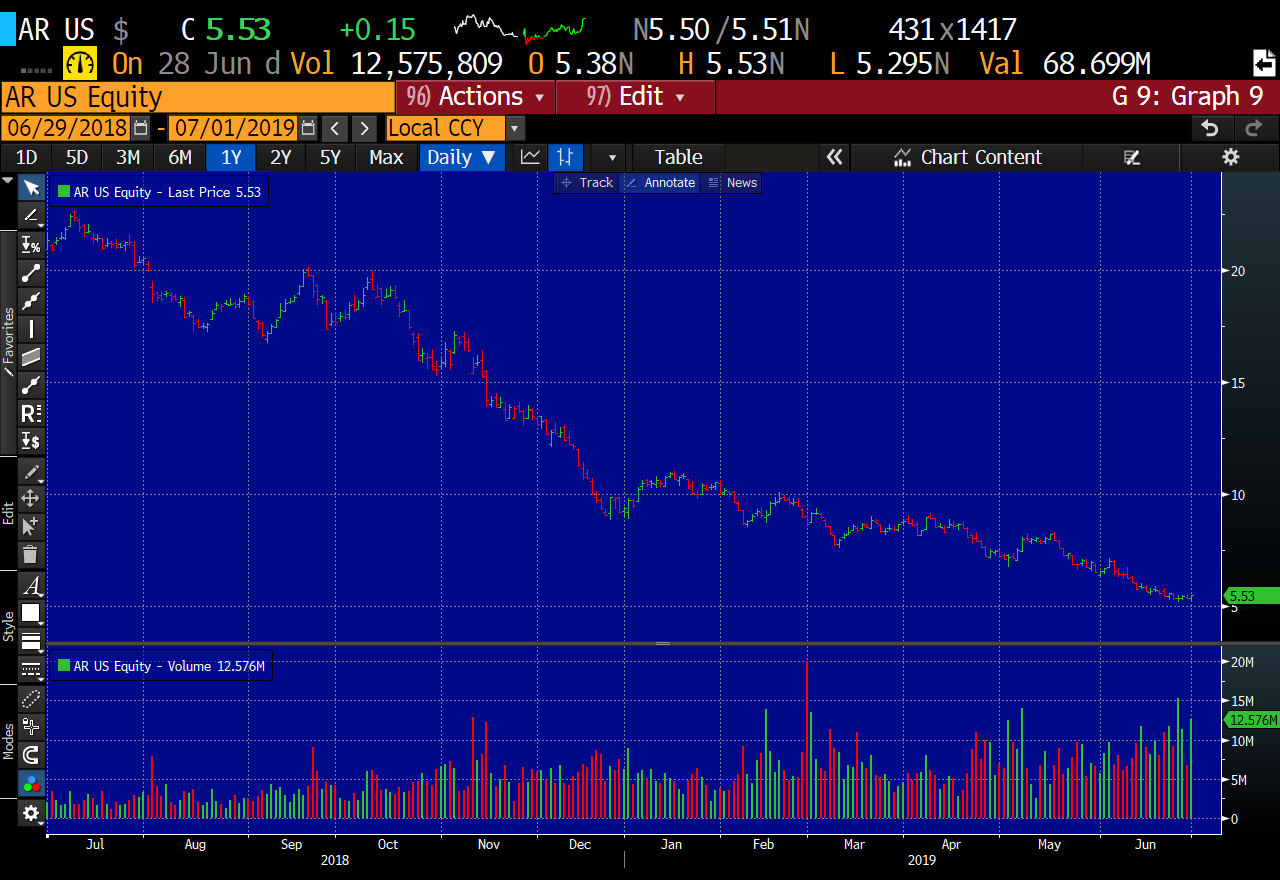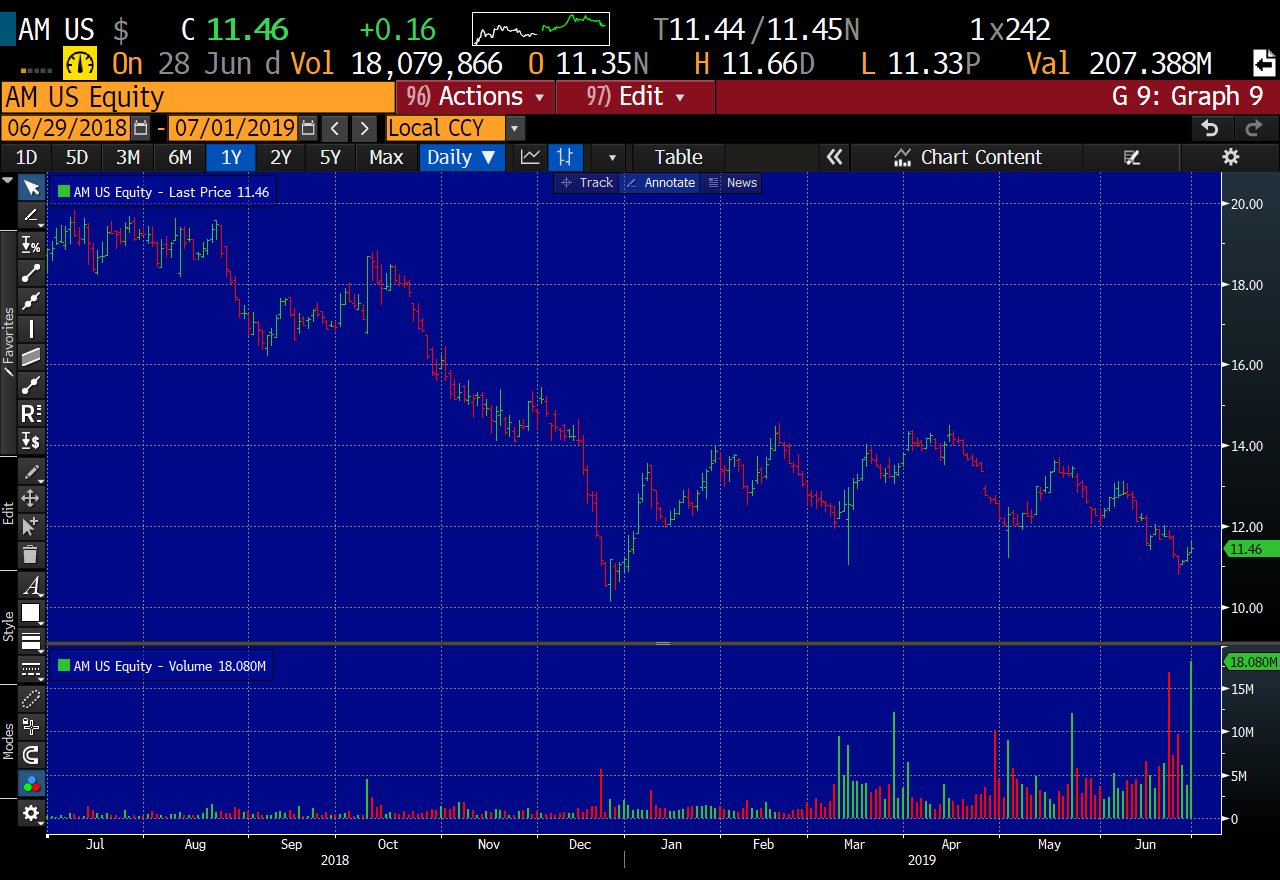“Yo Kuppy!! I’ve been working this order for 5 million shares for the past two months, I have 400k left. Gonna print em in the hole ‘cause it’s end of quarter and seller needs out. I’m taking 300 for the house account. You want the rest?
“Hell yea!! Take 25 cents a share on that!!”
Q1 hedge fund letters, conference, scoops etc
Did it matter what I was buying? Not really, as long at the business seemed somewhat fairly valued. A quick look at the chart and I could tell if my buddy was the one pressuring the stock for the past month. As long as it wasn’t right into earnings or news-flow, I was usually game for a big block of something I knew little about. I’m not going to say that I didn’t get burnt a few times (I still remember the block of Tenant Healthcare I drowned in. Block was printed an hour before the Feds raided the place). Overall, I mostly made money—lots of money. So much money that I didn’t mind overpaying on commissions to ensure that I was the first call or spending a lot of time in New York making friends with the sales trader crowd. Anytime you can buy the clean-up print after a massive sell order, you almost cannot help but make money—especially when the house account was taking the rest.
Who was on the other side? Some idiot pension fund with a mandate to pay the least amount possible to get the trade done. This was all before the days of algos and VWAP orders. Fast-forward 15 years and that pension fund will now split those 5 million shares into 50,000 blocks and then work them in at 10% of the volume. The clean-up print is a thing of the past—except once a year when Christmas comes in June.
David Einhorn famously used the example of jelly donuts where 1 is good, 2 is ok and a dozen is a fraternity pledging haze. Two decades ago, your typical index fund was probably a better option than giving money to an active manager. Fees were lower and most managers couldn’t beat the index anyway—so why not be the index itself? That concept has been taken to the point where owning an index fund ought to give you the same belly ache as eating a dozen donuts.
Think about it, depending on the stock, index funds are 10-30% of the float. Closet index funds represent a large percentage of what’s left over. The signal to noise ratio is downright bastardized. Even worse, these entities buy based on certain mechanical rules that ignore fundamentals. Maybe this works for large liquid stocks. Who the hell is on the other side when an index fund dumps 20% of the float of an illiquid stock? Well, I am.
The Russell indexes all re-balanced on Friday. Starting early in the second quarter, you had a pretty good idea of what they needed to sell. These stocks started collapsing as arbs pressed their shorts and longs stepped away. Who would buy before the index was finished selling? Look at some of the charts below—it’s just gruesome. I’m not saying that some of these businesses aren’t challenged, but they didn’t all get dramatically worse sometime in April. Index funds may have worked fine when the index owned a few percent of the company. Now the index fund is the largest shareholder and cannot enter or exit without wrecking the chart. It’s like the good old days of clean-up prints. Even worse, they tell you exactly how to make money off them. The pension fund I traded against may have been run by the coked-up son of the union boss, but he still knew enough to keep his mouth shut about the trades he was executing. Not the Russell, I’ve had the list for weeks. Are they asking you to front-run them?
2 insiders bought in May in the mid-2’s. Don’t they know that fund flows trump fundamentals?
CEO has bought over $1 million worth of stock in the open market since March. Fund flows still trump fundamentals
For 4 years in a row, DWSN has either been added (2016 and 2018) or deleted (2017 and 2019) from the index. The Russell has been buying high and selling low in a cyclical energy services company for 4 years straight. How is this creating any value for anyone except index arbs?
June is Christmas amongst my small-cap friends. We know to make our list and check it twice; ‘cause the Russell rebalance is coming to town. Doesn’t even matter if you’ve been naughty or nice. You just need to buckle down and learn a lot of companies in a hurry. You literally can’t help but make money.
Over the past few weeks, I scoured the lists, picked through the turds and found some I didn’t mind owning. I found quite a few I really wanted to own. I also found a bunch that looked like the clean-up prints of old—stocks that the Russell had simply murdered. I bought a big basket. They won’t all work—that’s the life of a clean-up print buyer, but they mostly work as long as you treat them as the trades that they are. Most aren’t meant to be investments. They say there’s no free money in the market—these guys clearly haven’t bought clean-up prints.
At the same time that the index is dumping names, it is rebalancing and reducing the weightings of companies that have seen their market caps decline during the year. The whole process is asinine. Why sell something that is down to buy more of something that’s up? In a one-off situation, maybe that works, maybe that makes sense if a company is fundamentally impaired, but across a basket of companies and sectors, you want to do the opposite and re-balance the portfolio into the sectors that are underperforming—not buy more shares of levitating Ponzi Sector scams.
Of course, as a value investor, most of what I own was sold down in June. This isn’t my first Russell rebalancing rodeo. I’ve been around long enough to know that if I want to initiate a position in mid-May, it’s probably going to be cheaper if I wait until the last week of June. If nothing else, there’s certainly more volume then. Since everyone plays with the same rule-book, it’s almost self-fulfilling. Many small cap stocks got murdered in June. Let’s just say I added exposure to many of my existing positions over the past few days.
One day, we’ll all look back on these index funds and laugh at the stupidity of it all. Trillions of dollars are sloshing around based on a spreadsheet model and they actually let you look at the spreadsheet and front-run the index before they make the trades. Screw it, I’m laughing at it all now.
ASPS is one of my largest positions. Glad the indexes let me max it out in the high teens.
AR is down because of pressure on NGLs as their nat gas is hedged for the next 2 years. Could it also be down because of index selling? Volume sure has increased in the past few weeks.
A large portion of the value at AR is their stake in AM. Sure hasn’t helped that AM was held down by the index rebalance.
Disclosure: Funds that I control are long HOV, CLUB, ASPS, AR
Article by Adventures In Capitalism


